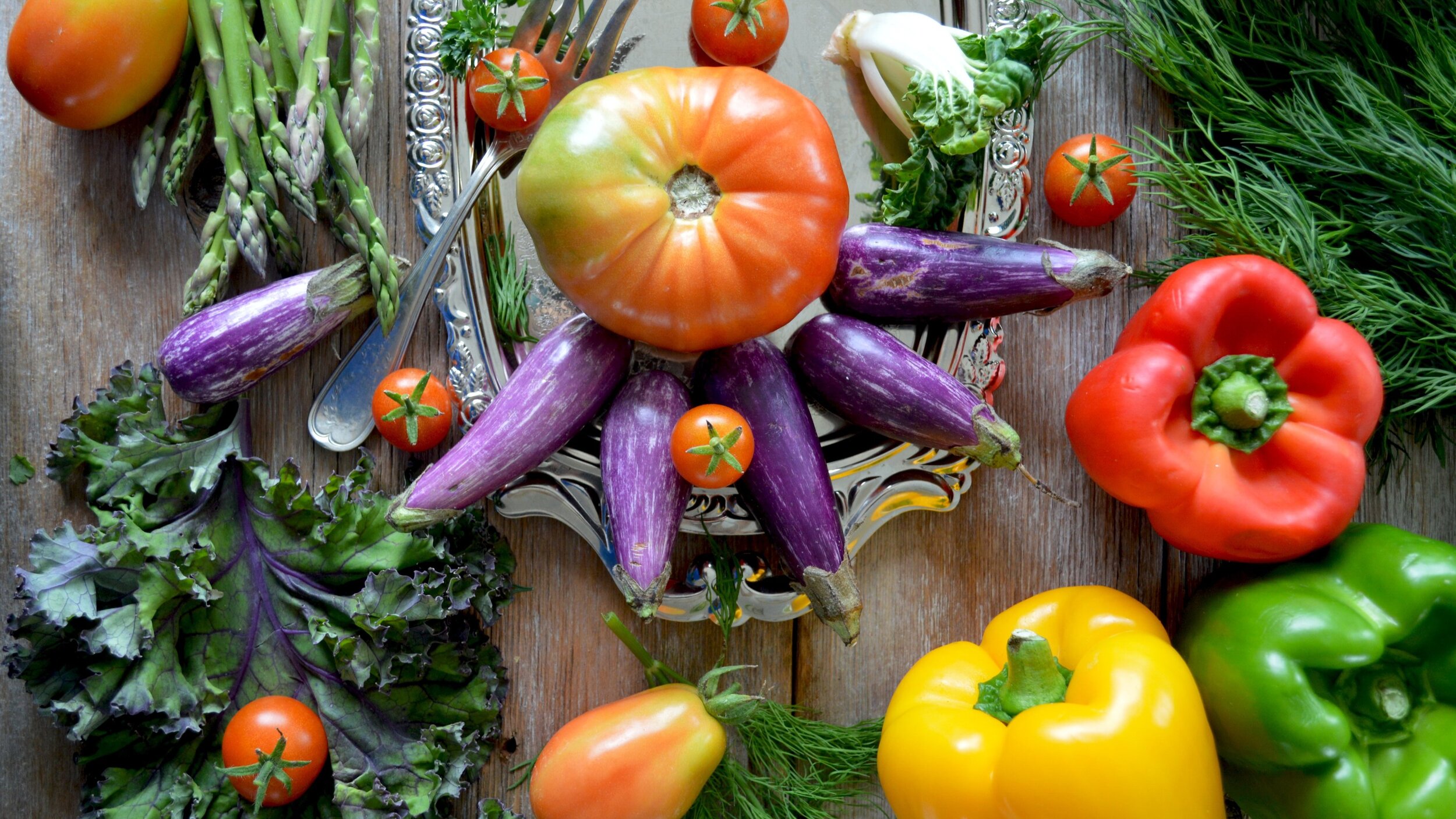Cook Colorful!
Cook Colorful is a fundamentally healthy eating tip. (And no, not artificially colored foods like candy!) But what does it really mean? Why is it important to get a variety of colorful fruits and vegetables in your diet? Can I eat the same variety each week and still get the same benefit?
The truth is that the variety of vitamins, minerals, antioxidants, and phytochemicals in fruits and vegetables have enormous healing powers. Each color in fruits and vegetables is caused by specific phytonutrients which indicates the presence of specific nutrients. According to Katherine D. McManus, MS, RD, LDN of the Harvard Health Blog, “When humans eat plant foods, phytonutrients protect us from chronic diseases. Phytonutrients have potent anti-cancer and anti-heart disease effects.”
The following is a list of fruits and vegetables sorted by color, along with the phytonutrients they contain, and which foods you’ll find them in. This list is provided by the Harvard Health Blog.
Red: Rich in the carotenoid lycopene, a potent scavenger of gene-damaging free radicals that seems to protect against prostate cancer as well as heart and lung disease.
Found in: strawberries, cranberries, raspberries, tomatoes, cherries, apples, beets, watermelon, red grapes, red peppers, red onions
Orange and yellow: Provide beta cryptothanxin, which supports intracellular communication and may help prevent heart disease.
Found in: carrots, sweet potatoes, yellow peppers, oranges, bananas, pineapple, tangerines, mango, pumpkin, apricots, winter squash (butternut, acorn), peaches, cantaloupe, corn
Green: These foods are rich in cancer-blocking chemicals like sulforaphane, isocyanate, and indoles, which inhibit the action of carcinogens (cancer-causing compounds).
Found in: spinach, avocados, asparagus, artichokes, broccoli, alfalfa sprouts, kale, cabbage, Brussels sprouts, kiwi fruit, collard greens, green tea, green herbs (mint, rosemary, sage, thyme, and basil)
Blue and purple: Have powerful antioxidants called anthocyanins believed to delay cellular aging and help the heart by blocking the formation of blood clots.
Found in: blueberries, blackberries, elderberries, Concord grapes, raisins, eggplant, plums, figs, prunes, lavender, purple cabbage
White and brown: The onion family contains allicin, which has anti-tumor properties. Other foods in this group contain antioxidant flavonoids like quercetin and kaempferol.
Found in: onions, cauliflower, garlic, leeks, parsnips, daikon radish, mushrooms
What does all of this mean to me? The American Gut Project performed the largest published study to date of the microbiome. They found that those people who consumed 30 different plant foods each week as compared to others who ate only 10 had a considerably more diverse microbiome. Lower bacterial diversity in the microbiome has been shown in multiple studies to be associated with increased inflammation and increases in chronic disease. The opposite of that, a diverse microbiome seems to be a generally good indicator of a “healthy gut” and a stronger immune system since each different microbe (the bacteria and other microorganisms that live in our gut) plays a different role in our health! Attempting to eat 30 different plant foods each week from each of the above categories is a fantastic way to improve your overall health. Varying the choices you make will further diversify your microbiome. I try to find a new fruit or vegetable that I have never tried each week. Of course, a healthy lifestyle also includes daily movement/exercise, stress reduction like meditation and a good sleep routine.
By using color as your guide in the kitchen, you can easily chart or keep track of the nutrients you are getting in your diet. Try to make a game of getting all the colors of the rainbow into your diet each week with your children. Keep a chart and have your children check off each time they eat a particular colored fruit or vegetable. Foods that have their color throughout the entire food are the most potent, for example, butternut squash, purple potatoes, tomatoes, yellow bell peppers, greens, etc. By limiting your processed food intake and increasing the huge variety of colorful fruits and vegetables, it is fun and easy to Cook Colorful, thereby increasing your overall health and immunity.
Action Items for Chronically Great Health!
Aim for 30 different plant foods each week!
Vary your weekly fruit/vegetable intake by trying to find new varieties/colors when you go to the store.
Make a game out of counting your different fruits/vegetables intake and/or check off how many times you eat each color!
Exercise a healthy lifestyle including daily exercise, stress reduction, consistent sleep and Cook Colorful!

